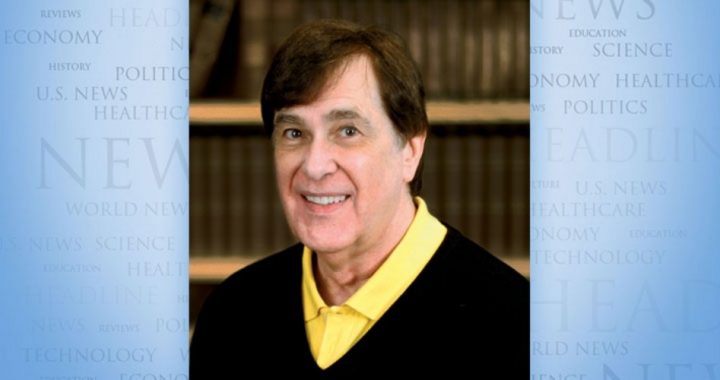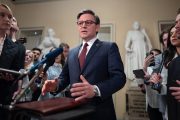
Americans were shocked by the surfacing of videos clearly revealing the blatant arrogance of White House Medical Consultant Jonathan Gruber as he described how ObamaCare proponents were able to lie to the American people to get the law passed. “Lack of transparency,” he smugly stated, “is a huge political advantage.” Gruber went on to pound his chest over the “very clever basic exploitation of the lack of economic understanding of the American voter. “Stupid,” was his favorite word.
The fact is, what Americans actually witnessed in those videos is the way the insiders actually talk to each other behind closed doors and how they really regard the American people. This is their attitude as they force a complete agenda down our throats to radically change the American system. And when they get caught with their pants on fire, Barack Obama and Nancy Pelosi look at reporters with deadpan faces, saying, “I don’t know who that guy is.” And these deliberate deceptions are not just connected to the passing of ObamaCare.
A blatant case in point is our nationwide fight to stop Agenda 21. We opponents aren’t fortunate enough to have such revealing, dramatic video to instantly shock Americans awake. But we do have a whole lot of evidence to prove the same tactics are being employed, while the proponents deny it even exists. Agenda 21? Never heard of it! Just a conspiracy theory! Wanna bet?
The facts clearly show that no one was denying Agenda 21 and its goals until after we made it a national issue. Just follow the bouncing ball:
1. On the American Policy Center’s website (www.americanpolicy.org), readers can see a CSPAN video from September, 1992, recording the official business in the U.S. House of Representatives. This particular session was held just after the UN’s Earth Summit ended. It clearly shows Rep. Nancy Pelosi introducing House Concurrent Resolution #353, which called for the “United States to take a strong leadership role on implementing decisions made at the UN Earth Summit, including Agenda 21, through domestic and foreign policy.” She went on to call Agenda 21 a “blueprint,” and a “comprehensive strategy.” She also said her Resolution had 71 co-sponsors and was supported by non-governmental organizations (NGOs) that had been represented at the Earth Summit.
Apparently in September of 1992, Agenda 21 was considered a “blueprint” for the future, at least in our nation’s main governmental body.
2. In 1994, the American Planning Association (APA) issued an article in one of its newsletters entitled “How Sustainable is Our Planning?” The APA is considered one of the nation’s most respected planning groups. Almost every city uses its policy guidebook to make planning decisions, and as it’s been around for several decades, the APA doesn’t openly have any ties to the United Nations.
Yet, this APA article, published just two years after the UN’s Earth Summit, openly discusses the origins of Sustainable Development coming from the UN’s Bruntland Report entitled “Our Common Future.” The report was produced by the UN’s Commission on Global Governance (but the APA article doesn’t call it that).
The most telling paragraph of the article is the fifth one. It says “Vice President Gore’s book, Earth in the Balance, addressed many of the general issues of sustainability. Within the past year, the President’s Council on Sustainable Development has been organized to develop recommendations for incorporating sustainability into federal government. Also, various groups have been formed to implement Agenda 21, a comprehensive blueprint for sustainable development that was adopted at the recent UNCED Conference in Rio de Janeiro (the ‘Earth Summit’)”
In that one paragraph, the APA ties together its planning strategy to Al Gore, the President’s Council on Sustainable Development (which was organized to take the Agenda 21 soft-law policy and make it official U.S. policy), it revealed the organization of specific groups intended to bring Agenda 21 into federal, state, and local policy. Above all, it defined Agenda 21 as a comprehensive blueprint for sustainable development.
Apparently in 1994, the American Planning Association considered Agenda 21 a “blueprint” to guide its planning policy in American cities.
3. In April, 1997, the United States issued a report to the United Nation’s Commission on Sustainable Development. The title of the report was “Implementation of Agenda 21: Review of Progress Made Since the United Nations Conference on Environment and Development” (Earth Summit). It details all of the actions the US had taken in the five years since the Earth Summit to implement the policy. In the report the U.S. recommends that the UN Commission on Sustainable Development (CSD) “should continue to serve as the focal point for monitoring the implementation of Agenda 21 at local, regional and international levels.”
Apparently in 1997, the U.S. had no problem not only implementing Agenda 21, but recognizing that the UN should be the main force to oversee it, even at the local level. By the way, for those not paying close attention, “local level” means YOUR community!
4. The Federal Register is the official document of the federal government, reporting on the day-to-day activities of Congress and detailing federal programs. In the August 24, 1998 Federal Register, on page 45156, there was a report entitled, “The Environmental Protection Agency: Sustainable Development Challenge Grant Program.” In that report was this interesting bit of information: “The Sustainable Development Challenge Grant Program is also a step in implementing Agenda 21, the Global Plan of Action on Sustainable Development, signed by the United States at the Earth Summit in Rio de Janeiro in 1992.” It also describes various programs offered through the grants to help local communities implement the goals of Agenda 21.
Apparently, in 1998, everything was well under way to make Agenda 21 policy unquestioned U.S. policy. That’s how non-treaty, soft-law “suggestions” become U.S. law.
So, right up to at least the year 2000, no one in Congress, the EPA, or even the main national planning group — the APA — gave any pause or doubt in their proud support for this “comprehensive blueprint” called Agenda 21. They were all equally proud to work right alongside the International Council for Local Environmental Initiatives (ICLEI). During those years, ICLEI was able to get more than 600 American cities to become duespaying members for the express purpose of implementing Agenda 21.
But then the fun started. A group of Americans who saw the Agenda 21 “blueprint” to be a threat to things like local elected control, private property rights, and even national sovereignty, began to organize under the banner of Freedom 21.
We put together eleven national conferences to teach activists about Agenda 21 and to create new tactics to fight it. As those activists took what they learned into their local communities, and as articles began to pop up on the Internet and local media, a strange thing began to happen. Suddenly, the once-bold Agenda 21 movement that proudly proclaimed their “comprehensive blueprint” of change, began to deny its very existence.
By 2005, the once pro-Agenda 21 crowd apparently had a complete lobotomy to wipe out any memory of Agenda 21. The most often used words now heard in association with Agenda 21 were, “Never heard of it.” And that was from the people who actually wrote it.
ICLEI removed references of it from its website. The American Planning Association quickly established a “Myths and Facts” section to its website, adamantly denying it had any connections to Agenda 21. “None of APA’s programs, products or services … are linked to Agenda 21,” it said. And if Agenda 21 was mentioned, it was prefaced by such words as “innocuous 20 year old document,” “Obscure United Nations accord,” or “arcane UN document.”
Of course, the Southern Poverty Law Center (SPLC) rushed into the fray by attacking all of those who dared speak out about Agenda 21. Somehow such open discussion of a political policy labeled us, at best, fringe nuts, and at worst, domestic terrorists. In its April 2014 report, the SPLC said, “Agenda 21 is not a treaty. It has no force of law, no enforcement mechanisms, no penalties, and no significant funding. It is not even a top down recommendation…. It’s a feel good guide.” That description is a long way from all of those giddy references about Agenda 21 being a “comprehensive blueprint.”
However, as we continued our fight, the once-proud Sustainablists worked harder to bury their connections. The American Planning Association, in particular, went into panic mode. First the APA organized boot camps to “retrain” its planners on how to deal with our opposition. Then they produced a “Glossary for the Public” to give planners guidelines on how to “talk” about planning. The opening line of the Glossary is the most telling: “Given the heightened scrutiny by some members of the public, what is said — and not said — is especially important in building support for planning.”
Can it be any clearer? Transparency was no longer to be part of the debate on Agenda 21 and Sustainable Development. Hide it, deny it, lie about it. It was all summed up by one of the planners who actually had advised President Clinton’s Council on Sustainable Development. J. Gary Lawrence warned planners that “Participating in a U.N. advocated planning process would very likely bring out many … right wing conspiracy groups …who would actively work to defeat any elected official … undertaking local Agenda 21. So, we call our process something else, such as comprehensive planning, growth management or smart growth.”
In complete exasperation, the SPLC demanded that the business community, the Chamber of Commerce, local governments, and the news media “stop reporting on Agenda 21 as if it were a bona fide controversy.” Further, it demanded that communities “need to be encouraged to return to or start to develop such plans in tandem with responsible groups like the American Planning Association.” In other words, stop questioning these plans and just shut up and do it. Ask yourself, what “plan” is the SPLC talking about, and why is it so very important that communities participate? Isn’t it all just “local” planning? Why would a national “anti-hate” group care so much about “local” programs?
There is no doubt that the attempts to hide implementation of Agenda 21 have been done using many of the same tactics Jonathan Gruber gloated over, and for the same reasons. If the American people knew the truth, they would rise up to stop it.


